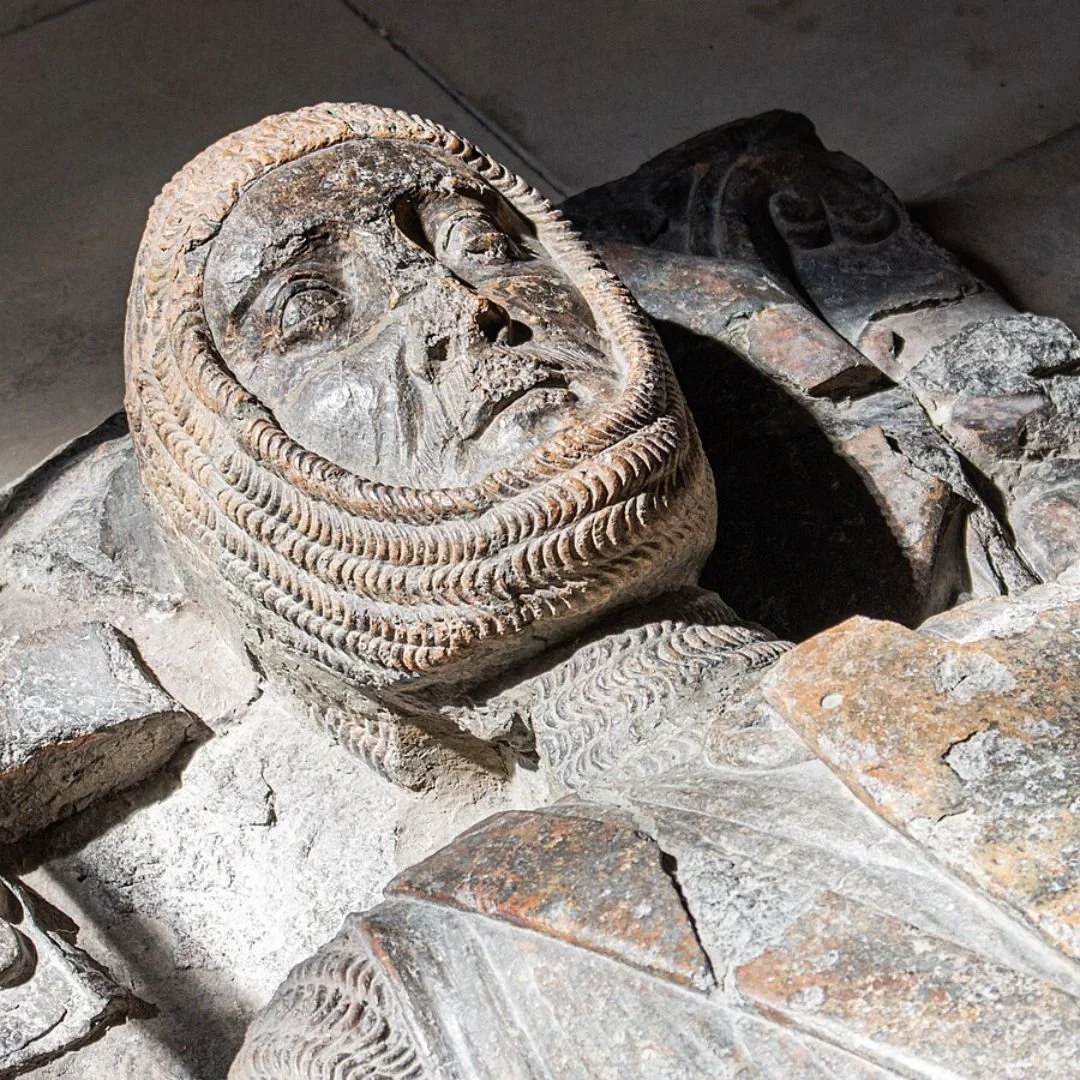Hundreds Of Dinosaur Footprints Found In Oxfordshire
The newly discovered ‘dinosaur highway’ has been uncovered beneath layers of mud in a quarry in Oxfordshire.
Oxford University Museum of Natural History
Researchers found nearly 200 dinosaur footprints, dating back 166 million years, shedding new light on our understanding of these ancient creatures.
The discovery was made at Dewars Farm Quarry, Oxfordshire in January 2025 by researchers from the Universities of Oxford and Birmingham.
The excavation will soon be broadcast on BBC Two’s 'Digging for Britain.'
Oxford University Museum of Natural History
The dinosaurs went extinct approximately 66 million years ago at the end of the Cretaceous Period, during an event known as the Cretaceous-Paleogene (K-Pg) extinction event.
This mass extinction is one of the most significant events in Earth's history, wiping out around 75% of all species, including nearly all non-avian dinosaurs.
While avian dinosaurs (modern birds) survived and evolved, non-avian dinosaurs, the large terrestrial species like Tyrannosaurus rex, Triceratops, and Brachiosaurus, went extinct.
The exact cause of the extinction remains a subject of scientific research, but two primary factors are most commonly associated with the event.
The first was an asteroid Impact: A massive asteroid hit the Yucatán Peninsula (Chicxulub crater), releasing huge amounts of energy, causing fires, tsunamis, and blocking sunlight with dust, leading to a dramatic global cooling.
The second theory was volcanic activity: Simultaneous massive volcanic eruptions (Deccan Traps) in India released gases that further contributed to climate change, including acid rain and long-term global warming.
NASA Image and Video Library
The extinction marked the end of the Mesozoic Era and allowed mammals to diversify, eventually leading to the evolution of humans.
The recent footprints found in Oxford include tracks from the 9 metre long carnivorous Megalosaurus, as well as much larger herbivorous dinosaurs, some reaching twice that size.
Five extensive dinosaur trackways were uncovered, with evidence suggesting even more in the surrounding area.
The longest of these trackways stretches over 150 metres.
Four of the tracks were left by massive, long-necked herbivorous dinosaurs, likely Cetiosaurus, an 18-metre-long relative of the better-known Diplodocus.
The fifth trackway belongs to the carnivorous theropod Megalosaurus, distinguished by its large, three-toed feet with claws.
Oxford University Museum of Natural History
In one part of the site, the tracks of herbivores and carnivores appear to cross paths, prompting questions about potential interactions between the two.
Megalosaurus holds the distinction of being the first dinosaur ever scientifically described, back in 1824, sparking the modern study of dinosaurs that has continued for over two centuries.
The newly discovered trackways further enhance the importance of the site.
Although the findings are separated by just 30 years, advances in modern techniques and technology now allow for a far more detailed and comprehensive recording of the prints than ever before.
Professor Richard Butler, Professor of Palaeobiology at the University of Birmingham, said: "This site offers even more to explore, and it plays a vital role in our national Earth heritage.
”Our 3D models will enable researchers to continue studying and sharing this remarkable glimpse into our past with future generations."
Oxford University Museum of Natural History
During the latest excavation, more than 20,000 images were captured of the tracks.
These will serve as a rich resource for ongoing research and education, potentially shedding light on how these dinosaurs moved, their size, speed, and even their possible interactions.
Dr. Duncan Murdock, Earth Scientist at OUMNH, added: "The level of preservation is so detailed that we can observe how the mud was displaced as the dinosaurs' feet sank in and out.
”Combined with other fossils such as burrows, shells, and plants, we can recreate the muddy lagoon environment through which these dinosaurs once walked."
The BBC’s Digging for Britain team filmed the work as part of a new series due to be broadcast next week.
Presented by Professor Alice Roberts, the programme will be available on iPlayer from 7th January, and broadcast on BBC Two on 8th January 2025.
The dig will also feature in the exhibition Breaking Ground at OUMNH, which tells the story of major developments in our understanding of the history of life and Earth.
Visitors will be able to view the Megalosaurus fossils used in the first description of a dinosaur, see photographs and video footage from the dig site.
They’ll also learn about the latest techniques used by palaeontologists to study dinosaurs.
Earliest dinosaurs to inhabit Britain
The earliest dinosaurs to inhabit Britain were from the Triassic period, around 225 million years ago.
This was a time when dinosaurs were just beginning to emerge and diversify.
Fossils of early theropods and plant-eating dinosaurs have been discovered in what is now the Midlands and parts of Wales.
The terrain was dominated by red sandstone, with rivers and wetlands cutting through what would have been a semi-arid landscape.
The first dinosaurs to walk the land would have been relatively small, but as the years passed, the Jurassic period saw the rise of larger and more diverse species.
By the time the Jurassic period arrived, Britain was a series of islands dotted across a shallow sea, a far cry from the dry lands of the Triassic.
The climate was warm and humid, and vast, fern-filled forests spread across the land. The Jurassic period, which lasted from about 201 to 145 million years ago, was the heyday of dinosaur life in Britain.
The fossil evidence from this period is rich, with numerous remains of herbivorous dinosaurs such as Iguanodon and Hypsilophodon, as well as carnivorous species like Megalosaurus.
Megalosaurus, one of the first dinosaurs ever named, was a large carnivorous theropod that lived in what is now southern England.
It hunted the herbivores of the period, some of which were as large as it was.
These herbivores, like Iguanodon, were some of the first large plant-eating dinosaurs to evolve, and their remains have been found in abundance in areas like the Isle of Wight, which is famous for its dinosaur fossils.
The Isle of Wight, in particular, was once an island in a vast, shallow sea, and its fossil-rich cliffs are among the most significant paleontological sites in Europe.
Other species, like Cetiosaurus, a giant long-necked herbivore resembling a primitive sauropod, also roamed the land, leaving behind fossils that provide insight into how massive these animals could grow.
This period was a time of great evolutionary experimentation, with many different types of dinosaurs evolving to fill various ecological niches.
The wetland forests, with their ferns and cycads, provided a thriving environment for both plant and animal life.
As the Jurassic gave way to the Cretaceous period around 145 million years ago, Britain’s landscape began to change.
The climate remained warm, but sea levels fluctuated, and the land was sometimes submerged.
Large herbivorous dinosaurs like Hadrosaurus (duck-billed dinosaurs) began to populate the region, and the carnivores that preyed upon them, such as Baryonyx, appeared.
The Cretaceous period also saw the rise of a number of marine reptiles, such as Ichthyosaurs and Plesiosaurs, which swam in the seas around Britain.
Fossils of these creatures have been found in the chalky cliffs of the south coast, including famous sites like the Jurassic Coast in Dorset, a UNESCO World Heritage site that spans millions of years of earth's history.
By the end of the Cretaceous, about 66 million years ago, the dinosaurs of Britain, like those all over the world, would face their final extinction, likely due to a catastrophic asteroid.
If you would like to learn more about this fascinating discovery, we would recommend a visit to The Oxford University Museum of Natural History, in Oxford.
It is part of the University of Oxford and is known for its impressive collections and historic building, which combines stunning architecture with cutting-edge scientific displays.
One of the most famous features of the museum is its collection of dinosaur skeletons, including a complete Iguanodon skeleton.
There are also numerous fossils of early mammals, reptiles, and ancient marine life.
The museum is famous for being home to one of the few remaining specimens of the dodo, a flightless bird that became extinct in the 17th century.
Admission to the museum is free, but donations are welcomed.
If you enjoyed this blog post, please follow Exploring GB on Facebook for daily travel content and inspiration.
Don’t forget to check out our latest blog post below!
Thank you for visiting Exploring GB.
























